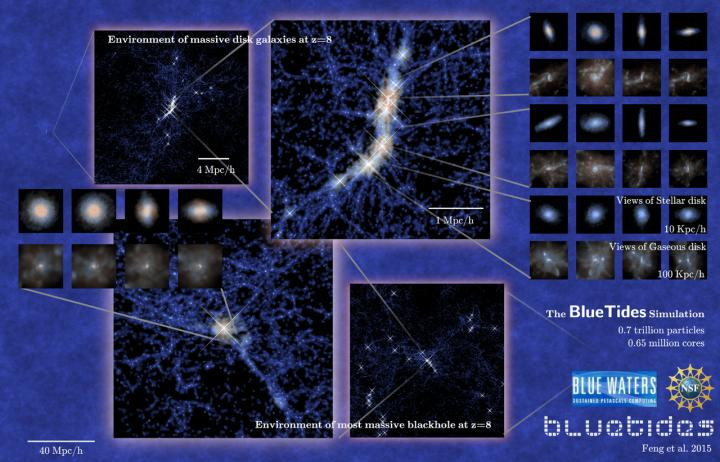Simulation showing Milky Way-esque galaxy in early universe could prove cold dark matter theory

Researchers from Carnegie Mellon University's McWilliams Centre for Cosmology and the University of California Berkeley said their simulation – dubbed BlueTides – shows large disk galaxies could have existed in the early universe.
Tiziana Di Matteo, professor of physics at Carnegie Mellon, said: "It's awe inspiring to think that galaxies much like our own existed when the universe was so young. The deepest Hubble Space Telescope observations have thus far only covered small volumes of space and have found very irregular, clumpy galaxies at these early epochs.
"It is not surprising that in these small volumes some of the small galaxies do not have regular morphologies like large disk galaxies. Similarly, numerical simulations have been limited in size so they have only made predictions for the smaller, clumpier galaxies at these early times."
The team created the simulation by seeding constraints from the cold dark matter theory – the most widely accepted explanation for what happened in the universe after the Big Bang.
BlueTides is 100 times larger than other previous simulations. After it was completed, the scientists looked to see what they could find in the same way a cosmologist would with data from a telescope. They saw a number of disk galaxies had formed just 500 million years after the Big Bang 13.8 billion years ago – much to their surprise. Because of their size and complexity, most researchers believe these galaxies would need much longer to form.

CMU's Rupert Croft explained: "Theoretically we thought that when the universe was only 5% of its present age, it would be a place full of chaos and disorder. Our simulation showed that the early universe might be far from being just this. It might contain beautiful symmetrical galaxies, like the Milky Way."
Their findings are to be published in the Astrophysical Journal Letters and researchers say they will help guide the search for evidence of the first galaxies using the likes of the Wide Field Infrared Survey Telescope (WFIRST) and the James Webb Space Telescope.
If telescope searches fit the descriptions from the BlueTides simulations, the authors say it could be strong evidence of cold dark matter theory. Di Matteo said: "Previously, we couldn't study disk galaxies in the early universe using telescopes because the galaxies were so faint and rare.
"We couldn't study them in a computer because no computers were large enough to cope. The technology has caught up, and we can complete the simulations using today's large supercomputers, and we will be able to use telescopes like WFIRST to make the observations."
© Copyright IBTimes 2025. All rights reserved.






















